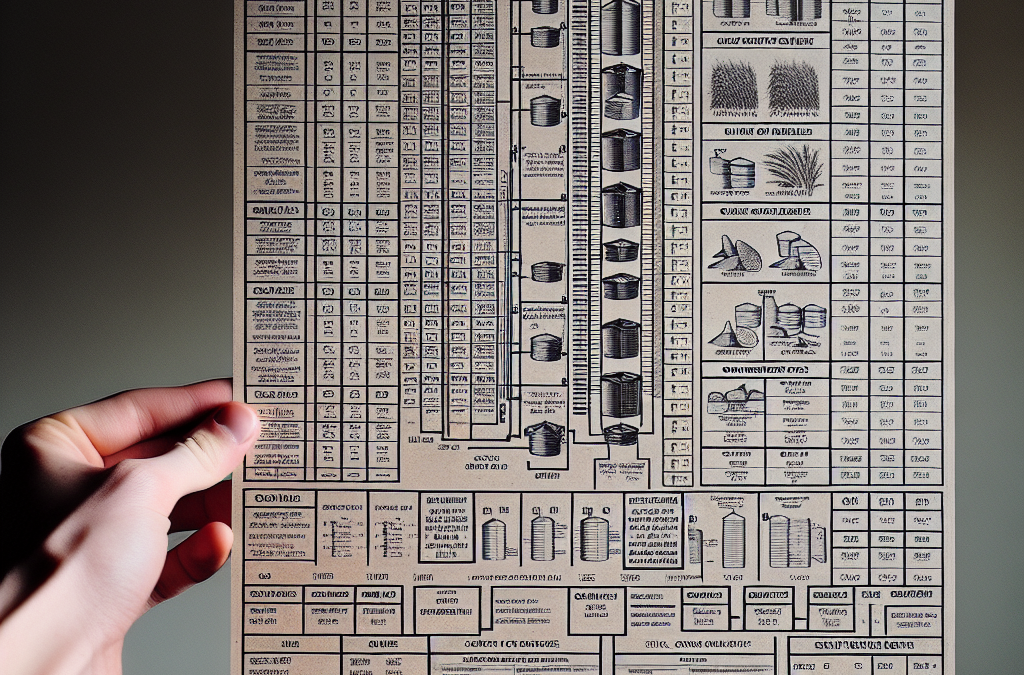Understanding Your Grain Inventory
Assessing Your Current Inventory
First off, let’s talk about understanding what you have on hand. I remember when I first started, I just kinda guessed how much grain I had, and it didn’t go too well. I found that getting a clear idea of your inventory really helps in managing storage effectively. Grab a clipboard or open a spreadsheet, and just jot down what you have.
It helps to categorize the grains, whether it’s corn, wheat, or oats. Dividing them this way not only makes it easier to track but also helps when it comes to consumption patterns. You might notice you have heaps of one type and barely any of another! This is especially important if you work with grains that have different storage requirements.
Lastly, keep an eye on the quality of each grain type. If something has been sitting around for a while, consider a test for moisture or spoilage. Getting a clear picture of what you’re working with will help you form a solid plan moving forward.
Choosing the Right Storage Method
Types of Storage Solutions
When I first started storing grain, I wasn’t sure if I should go with bins, bags, or silos. Each method has its perks and drawbacks, and it really depends on what you’re working with. For example, grain bins are perfect for scale, while bags can be more flexible and mobile.
Think about your space and how much grain you typically store. If you have limited space, using sack storage might be the way to go. Just a heads up thought, bags don’t protect against pests as well as bins can. Be sure to weigh your options and choose wisely based on your needs and resources.
Lastly, don’t forget about ventilation! Good airflow is crucial. Otherwise, you could be facing spoilage even with the best storage methods. Routinely check your grains, regardless of their storage type, and monitor humidity levels to keep everything fresh.
Creating a Grain Storage Chart
Designing Your Chart
Now, let’s get to the nitty-gritty of creating that chart! I started with a basic template: columns for grain type, quantity, storage location, and any notes about quality or usage. Simple, right? But trust me, having it all in one place is a game changer.
Consider utilizing tools like Excel or any grain management software available out there, which can also help track your grains in a more visually appealing way. You don’t need to reinvent the wheel, just keep it straightforward—clarity is key!
Once your chart is set up, don’t forget to date updates. This will help in tracking how quickly different grains are being consumed or if any are lingering longer than they should. Keeping your chart updated can save you a lot of hassle in the long run.
Monitoring Your Grains
Regular Inspections
Monitoring isn’t just a once-a-month deal. I’ve learned the hard way that regular checks on grain storage can prevent a lot of problems. I make it a habit to schedule inspections every couple of weeks. This way, I can catch any issues like moisture buildup, bugs, or spoilage before they spiral out of control.
Get Whole Wheat Flour, Grains and Milling Supplies – CLICK HERE
During these inspections, make sure to refer back to your grain storage chart! It acts as a reminder of what to expect. Compare what’s on your chart with what you see physically; if there are discrepancies, you might need to investigate further.
Also, engaging your team in these inspections can promote accountability. Sharing this process really helps everyone understand the importance of grain management. Plus, it can turn into a fun activity when done together!
Improving Your Grain Management Practices
Feedback and Adjustments
In any management practice, reflection is critical. After a few months of using my grain storage chart, I noticed some areas could be optimized. Maybe I had too much of one grain and not enough of another or misjudged how fast I was consuming certain products. It’s totally normal!
Gather feedback from anyone who shares the responsibility of grain management with you. They might have insights or suggestions you hadn’t considered. This collaborative approach can lead to innovative ideas that boost efficiency.
Finally, don’t hesitate to update your practices as new methods or storage solutions become available. Grain management is an evolving practice, and staying informed will make you a pro in no time.
FAQs
1. What is a grain storage chart?
A grain storage chart is a tool used to track different types of grains, their quantities, storage locations, and conditions. It helps manage grain inventory effectively.
2. How often should I inspect my grain storage?
It’s recommended to inspect your grain storage every couple of weeks to catch any issues early and maintain quality.
3. What are the best storage methods for grains?
It often depends on the scale of storage. Options include grain bins for large volumes, bags for flexibility, or silos for high-capacity needs, each with pros and cons!
4. Can I store different types of grain together?
It’s generally best to store different grain types separately to prevent cross-contamination and ensure each type is monitored correctly.
5. How do I know if my grain is spoiled?
Look for signs like unusual odors, moisture buildup, or visible pests. Regular inspections are key, as is trusting your instincts; if something feels off, investigate!
Get Whole Wheat Flour, Grains and Milling Supplies – CLICK HERE
Related Content
Auto Amazon Links: No products found.





